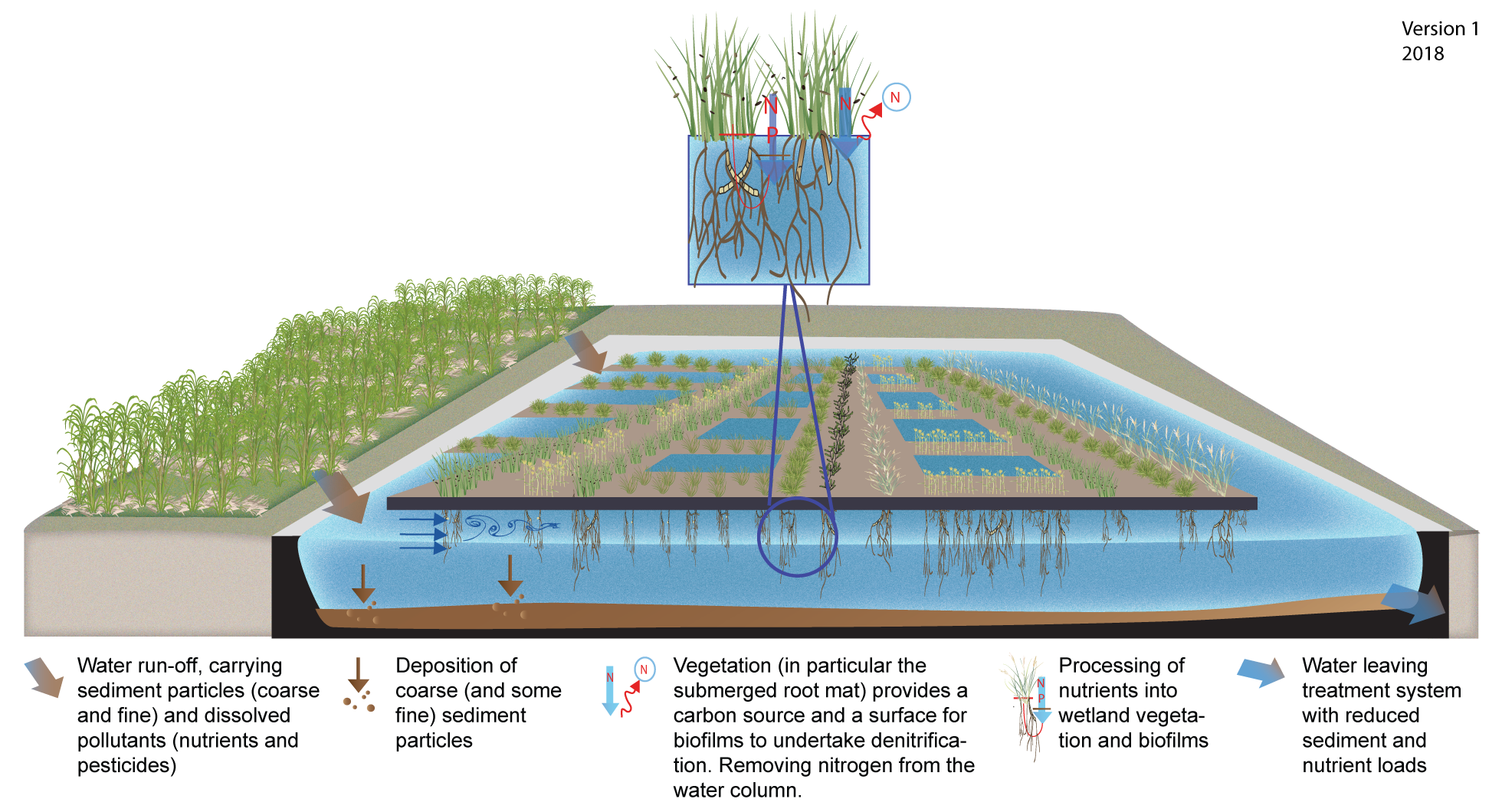|
|
Floating wetlandsFloating wetlands — Construction and operationSelect from the tabs below ApprovalsApprovals may be required for the construction of a treatment system. Contact your local government before any construction is undertaken to understand requirements. Prior to construction, check for any existing infrastructure by contacting electricity, water and telecommunication providers. If excavation is required, it is recommended that local Traditional Owners are engaged to ensure no sites or items of cultural significance are disturbed. If excavation is required, it is recommended that local Traditional Owners are engaged to ensure no sites or items of cultural significance are disturbed. Engineering advice should be sought prior to construction to ensure the treatment system is sized and sited appropriately. ConstructionThe floating matrix is usually manufactured off site and assembled at the desired location. Excavation of a pond may be required if there are no suitable existing waterways or ponds. Time for establishmentEstablishment of the plants requires 6-12 months, depending on location and weather conditions[1][2]. OperationMinimal operational requirements. Some installations may have a recirculating pump system which will require an electrical power source. Monitoring and maintenanceMonitor plant health, including root system. Control weeds and pests. Harvesting/pruning of plants may be required, particularly if the aim is to remove phosphorous from the treatment system. Suspended solids settled in the waterbody beneath the floating wetland should be removed periodically as required to ensure sufficient sediment trapping capacity and to remove any pollutants that have bound to the sediment. The operator can move the treatment wetland aside, dredge and replace the treatment wetland island. Lifespan/replacement time20-30 year lifespan estimated. Regeneration of vegetation should occur naturally. DisclaimerIn addition to the standard disclaimer located at the bottom of the page, please note the content presented is based on published knowledge of treatment systems. Many of the treatment systems described have not been trialled in different regions or land uses in Queensland. The information will be updated as new trials are conducted and monitored. If you have any additional information on treatment systems or suggestions for additional technologies please contact us using the feedback link at the bottom of this page. References
Last updated: 5 October 2018 This page should be cited as: Department of Environment, Science and Innovation, Queensland (2018) Floating wetlands — Construction and operation, WetlandInfo website, accessed 8 May 2025. Available at: https://wetlandinfo.des.qld.gov.au/wetlands/management/treatment-systems/for-agriculture/treatment-sys-nav-page/floating-wetlands/construction-operation.html |

 — Department of the Environment, Tourism, Science and Innovation
— Department of the Environment, Tourism, Science and Innovation


